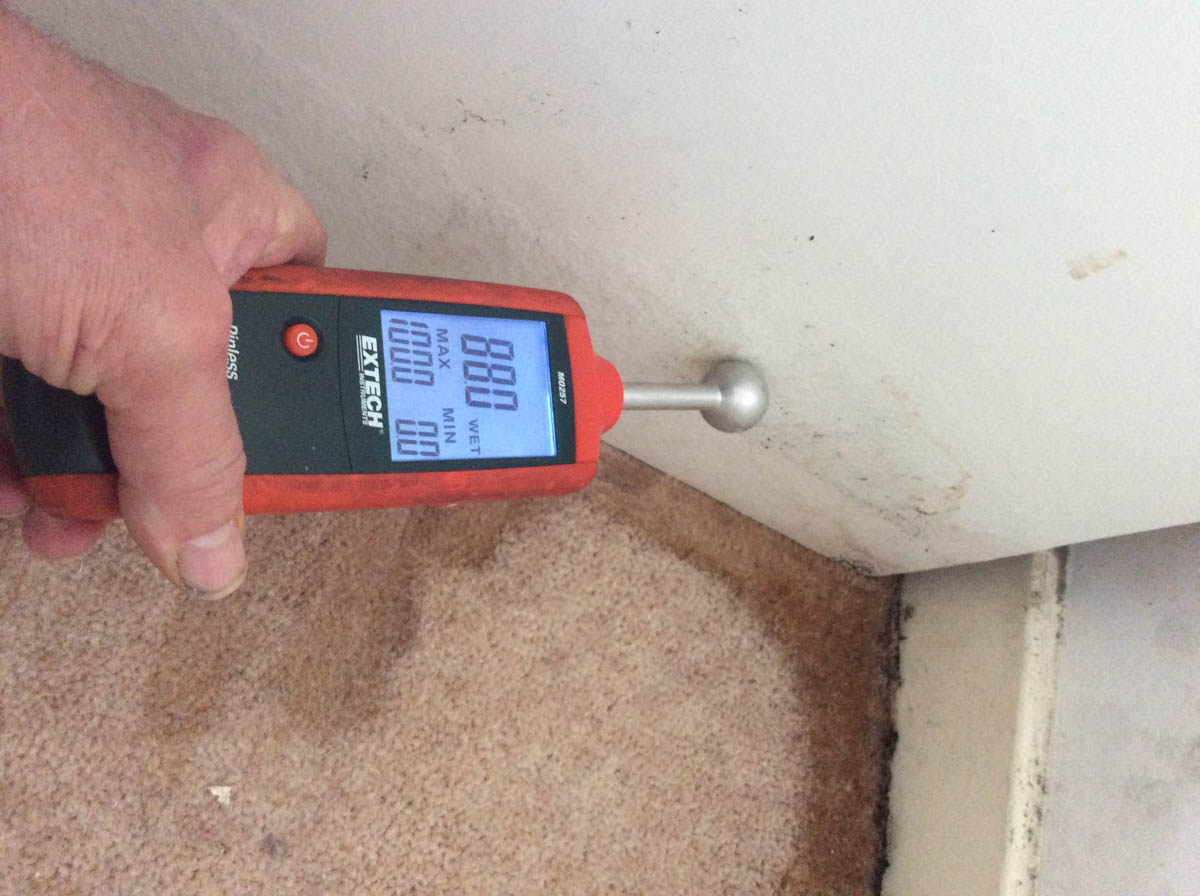Technology
For accuracy, UK Leak Detection endeavour to confirm a leak with two methods of leak detection. No one piece of equipment can find every leak, and as we are the only ‘no find no fee’ leak detection company, we have a vested interest in not just looking for… but finding your leak!
Like all equipment, there is a range of quality and function that affect results. Like all things, there is a range of cost, quality and function that can affect results.
We only invest in the best equipment and technologies to provide accurate results and successfully find your leak.
We have created this as a basic guide to the various technologies available and how these can be used.
Thermal Imaging Leak Detection:
When using thermal imaging for water leak detection, our technician scans the suspected area, looking for temperature anomalies that may indicate the presence of a leak. Where a leak is found, it will appear as a cooler or warmer area on the camera’s display, depending on the temperature of the surrounding materials.
Thermal imaging can be particularly useful for tracing pipework and detecting water leaks in concealed areas such as walls, floors, and ceilings. Importantly, it can also help identify the extent of the damage caused by the leak, allowing for targeted repairs and minimising invasive investigations.
UK Leak Detection use high-quality thermal imaging cameras for our leak detection. However, we do not consider that thermal imaging should be the only technology used, but should complement other technologies for greater accuracy.
Acoustic Leak Detection:
The most basic is a ‘listening stick’ that you might see your water company using on the street, not particularly accurate, will only really find large leaks on the street and easily overwhelmed by ambient noise.
The first ‘proper’ acoustic equipment is analogue with a few filters (like tone controls) and has a basic microphone that covers most requirements.
We use a new generation of digital systems, these not only allow us to listen to the leak noise in a broad range, but we can slice the noise up into frequencies to reduce spurious noise like traffic and concentrate on just the leak.
The microphones also vary in cost and function. Low profile for under units, others sit on a small frame, some have a 1000mm spike for sticking in the dirt, and one is even called the ‘Elephants Foot’!
Each has a particular attribute for a particular job; UK Leak Detection carry all these to ensure we have the right tool for the job.
Regardless if it’s a ‘listening stick’ or our digital system, silence is golden and the quieter it is, the better the results, so please don’t be offended if we ask you to switch the TV or radio off etc.…
Tracer Gas Detection:
This gas is an inert, non-toxic gas, it has no colour or smell and is invisible, and it has an element we can search for with a detector. Carried in a lighter than air mix of nitrogen/hydrogen this rises from the leak and we can detect this even through concrete floors.
This has rapidly become the primary method of leak detection, as it both pressure tests and accurately locates pipework leaks in a single function
Correlation:
Used mainly on water mains, this is often used with other technologies. A pair of microphones is placed each end of the suspected pipe, then the length, size and pipe material is entered into a computer that then listens to the pipe and calculated where along the length the leak noise is.
Moisture Metre:
 Originally these are pair of pins pushed into the surface to detect how wet it is. However, these cause damage and can only tell you how wet it is on the surface and not deeper into a wall or floor.
Originally these are pair of pins pushed into the surface to detect how wet it is. However, these cause damage and can only tell you how wet it is on the surface and not deeper into a wall or floor.
We use a pin-less technology that uses a form of sonar to check for moisture and can penetrate beyond the surface to check; in fact, it will ignore surface water entirely!
Water analysis:
 Particularly when dealing with saturation and damp issues, ‘what’ the leak is can be as important as ‘where’…
Particularly when dealing with saturation and damp issues, ‘what’ the leak is can be as important as ‘where’…
We can analyse water samples to detect if these are tap water, wastewater or rain/ground water. Where this is only presenting as deposits on the surface (efflorescence), this can be tested in the same way.
Electronic Roof Leak Detection:
This is divided into high or low voltage and wet or dry tests.
A high voltage test is made on a dry roof by trying to pass a very high voltage through the roof, this should not be possible, and where there are weaknesses or leaks, we can see a spark dump to our detector.
A low voltage test is made on a wet roof, a pair of poles is carried (a bit like a skier) and the detector will indicate where the leak is in a decreasing radius until directly over the leak (or leaks).
Bore Scope:
This is simply a camera on a thin semi-flexible shaft that can be introduced into voids and under floors without causing large amounts of damage. A 5mm hole is enough to introduce the camera and is there is no gap a small drill can provide access.

